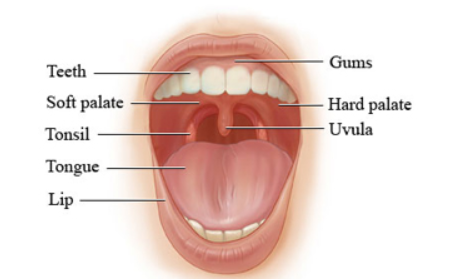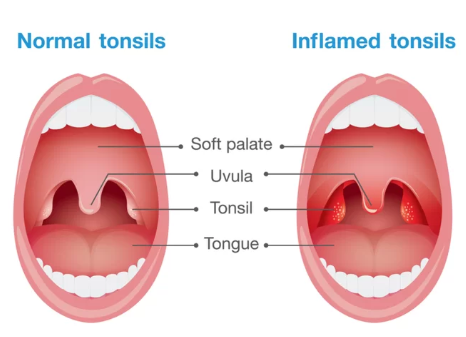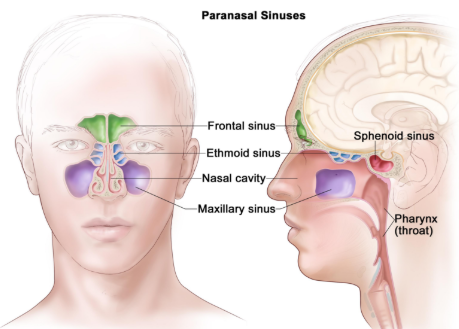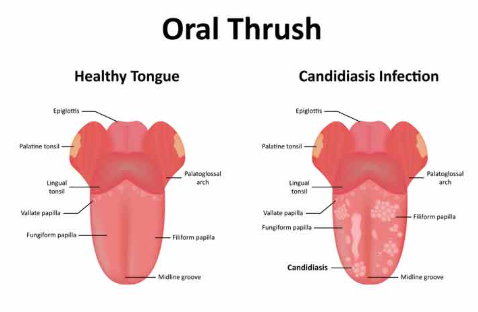Roof of the mouth pain is a common problem .This part of the mouth has delicate skin tissue that is susceptible to many mouth problems. Get more insight on the causes of roof of mouth pain, symptoms and treatment.
The roof of the mouth is also known as the palate. The tissues in the mouth are very sensitive since they are mainly come into contact with many foreign materials that may have negative effect.
The reactions make the roof of the mouth to be sore or it can develop a burning sensation. The sores can lead to discomfort in mouth while eating or drinking. The sores can be aggravated by snoring, eating spicy foods and drinking hot tea or coffee.
The roof of the mouth can become swollen due to a number of reasons such as allergic reactions, irritants, injury, and infections.
There are numerous home remedies and medical treatments that can help to relieve the pain in the roof of the mouth. In case the pain persists, seek for immediate treatment from a professional doctor.
What does it mean when the roof of mouth hurts?
The roof of the mouth can hurt due to different reasons. Some of the common causes of pain in the roof of the mouth include:
- Burning the Tissue
Drinking plenty of hot beverages can scald the roof of the mouth. Also eating hot and spicy foods can irritate the delicate tissues in the roof of the mouth. The area that was burn develops a blister and it became sensitive to any touch. The condition can last for several days after the initial burn.
Treatment
Cooling the roof of the mouth after burn can ease the pain and also prevent further damage on the tissue. Sip cold or icy liquids slowly and swish on the affected area. Allow the area to heal completely by avoid food to come into contact with it. Also limit the intake of spicy, sharp or otherwise irritating foods.
- Irritating Substances
The use of substances that causes irritation on the roof of the mouth can hurt. These foods or substances have sharp edges that can scratch the skin tissues causing a lot of discomfort.
The use of spicy, hot or spicy foods can damage the roof of the mouth leading to swelling or pain. Also the use of tobacco substances can lead to further damage of the palate.
Treatment
Maintain proper oral health by avoiding foods or substances that constantly irritates the roof of the mouth. Once the tissues in the mouth are affected, restrict your diet to foods that are blunt with moderate temperatures to limit the risk of causing further damage.
- Canker Sore
These sores do develop on the roof of the mouth. Canker sores are caused due to exposure to bacterial infections or when the tissue becomes damaged due to a scratch or burn. These sores will begin as a red mark on the roof of the mouth, but will slowly fill in with white or yellow pus.
Treatment
Avoid opening up the sores on the roof of the mouth since it could cause spreading of the bacterial infection. The infection can also increase the chances of developing more canker sores in the mouth.
Canker sores go away on their own after some days. Avoid coming into close contact with the canker sores. To relieve the pain, the use of canker medication is recommended. You can also use salt or baking soda to the sore to help kill the infection, though this can be painful.
- Infection
When the body comes into contact with bacteria or viruses such as streptococcal sore throat, the common cold, tonsillitis, sinusitis or others. This can be triggered by sinus pressure pushing on the mouth or bacteria irritating the flesh inside the mouth.
Treatment
Intake of foods that have high level of vitamin B and C can help infected sores in the roof of the mouth to heal faster.
- Dental Issues
Infection of the top of the tooth can put pressure on the soft tissues in the roof of the mouth causing a lot of pain. The tooth abscess can cause infection or ulcer to spread from the gum line to the palate. Also use of ill-fitting dentures or an oral device can irritate the mouth roof causing the pain.
Treatment
Consult a medical professional for the treatment of the tooth to reduce discomfort. Also use dental work performed or another oral device that can help ease the pain in the mouth.
- Burning Mouth Syndrome
Burning mouth syndrome can result in pain the roof of the mouth. The exact cause of the problem is still unknown. The experts report that it could be due to dryness in the mouth or oral thrush.
Some of the common signs and symptoms burning effect which is more severe in the morning and will lessen throughout the day.
Treatment
Eating yogurt will help to ease the symptoms of diseases in the mouth and even oral thrush that causes pain in the mouth. Applying a baking soda paste to the infected area will ease the pain and reduce the formation of lesions on roof of mouth.
- Mouth Cancer
The roof of the mouth can be irritated due to the growth of tumors. Some of the common cancerous growths in the mouth are melanoma or lymphoma. Lymphoma begins as the growth on the tongue or tonsils and spreads to other areas of the mouth. Melanoma can occur anywhere in the mouth.
Treatment
It is recommended to seek immediate medication in case you notice a growth that rapidly changes in color. Consult a medical doctor to conduct some test to determine if the condition is dangerous.
What Causes Roof of the Mouth to be Sore and Swollen
The roof of the mouth can become swollen due to a number of reasons. Some of the common causes include:
- Infections
The roof of the mouth can become swollen due to viruses or other infection. The typical cause of mouth sores is herpes simplex virus. The common cause of recurring mouth sores that are painful are chickenpox virus and varicella-zoster.
Tooth decay and poor oral hygiene can result in bacterial infection that causes swelling and soreness. Patients with AIDs are prone of getting sores on the roof of the mouth due to due to overproduction of candida yeast, and syphilis.
- Physical Trauma
Swellings and pain in the roof of the mouth could be due to injury or trauma. The trauma could be due to biting a cheek accidentally or be due to orthodontic or dental procedures. The use of acidic foods or fruits can cause more harm in the roof of the mouth.
- Smoking and Tobacco Use
It contains toxic substances that can irritate the skin tissue in the mouth. Excessive use of tobacco can contribute to roof of mouth pain by complicating other conditions, such as drying of the mouth, an imbalance in pH, and reducing the body’s immune properties.
- Medical Treatments
Roof of the mouth pain is the common side effects of certain medical terms. The condition is quite common to patients who are undergoing chemotherapy or other radiation treatments.
- Systemic Illness
There are numerous systemic conditions that can result mouth pain and complications in other areas of the body. They include:
- Rare skin diseases may cause blistering or other painful conditions.
- More common illnesses, such as Irritable Bowel Syndrome (IBS) or Celiac Disease also affect sufferers with mouth pain.
- Severe allergic reactions and inflammatory illnesses can also attribute to roof of mouth swelling and pain.
Home Remedies for Swollen Roof of Mouth
They include:
- Salt Water
It helps to ease the pain and help to get rid of bacteria or virus causing the infection. Mix salt with warm water and gargle the solution. Swish the solution around the mouth until the glass is empty.
- Aloe Vera
It helps to heal inflammation, open wounds, and provides soothing relief. You can obtain the gel from any drugstore or you can extract it from raw aloe Vera leaf.
- Ice Cube
It has cooling effect since it help to reduce pain and swelling by lessening blood flow in the area. Hold the ice cube since it helps to ease the discomfort.
- Tea Tree Oil
It is anti-bacterial, anti-inflammatory, and can help soothe pain. Obtain a mouthwash that contains drops of tea tree oil with water. Rinse off the mouth with water afterwards.
- Licorice Root
It helps to protect mucus membranes, reduces inflammation, and heals wounds. Soak the mouth with a solution of crushed root licorice root and use it 3-4 times a day.
- Coconut Milk
It helps to ease the pain. Rub the area with a mix of honey and milk a few times a day, or rinse with coconut milk.
- Coriander Seeds
The seeds help to ease inflammation and relieve pain. Make a mouthwash by boiling 1 teaspoon of seeds. Rinse off the mouth to 4 times a day with cool solution.
- Sea Salt and Hydrogen Peroxide
The mixture help to reduce inflammation, relieves pain, and fights off infection. Mix the solution in equal amount and use it on a daily basis.
- Baking Soda
It helps to neutralize the acid, reduces inflammation, and fights infection. Apply the paste on the area directly.
- Honey
Apply honey on the roof of the mouth directly. It helps to moisturize skin tissues in the mouth.
Why is the Roof of Mouth Swollen and Painful?
The following are some of the reasons for swollen and pain in the roof of the mouth. The reasons include:
- Burns
The common cause painful sores on the roof of the mouth are eating hot foods. The skin on the palate is delicate than the tongue. The burn causes the formation of blisters swelling, and damage to the roof of the mouth.
According to the journal Registered Dental Hygienist, foods and drinks heated by the microwave are the common reason behind the damage on the roof the mouth.
- Infections
Bacterial or viral infection can result in swelling, discomfort, and painful abscesses in the mouth. The common infection is caused by tooth decay.
Doctor of Dental Surgery, Dr. David F. Murchison says that infections from teeth or gums can cause a pus-filled bump to form and this can cause inflammation around the infected area.
- Injury / trauma
The injury could be due to sharp edges of certain foods like potato chips or nachos scratching the palate. Poor fitting dentures can rub on the roof of the mouth resulting in the formation of blood blisters or mouth ulcers.
- Mucous cyst (mucocele)
It can result in swelling and formation of bumps on both the roof of the mouth or tongue. They do develop when the salivary gland get blocked and filled up with mucus. According to dentist Dr. Alfred D. Wyatt Jr, the common symptoms are painless bumps that are soft and round.
- Canker sores
According to the American Academy of Otolaryngology, these sores mainly appear around the mouth and also on the soft palate. Canker sores can also appear inside the cheeks and on the lips. Canker sores are caused by stress, injuries to the inside of your mouth, vitamin deficiencies, or food allergies.
- Cold sores (fever blisters)
These cold sores are mainly caused by the herpes simplex virus (HSV-1). Infection result in the formation blisters filled with fluid on the lips and gums. According to the American Academy of Otolaryngology, fever blisters can also appear on the roof of the mouth.
- Burning mouth syndrome (BMS)
It results in constant and recurrent burning in the mouth. The burning effect results in damage on the roof of the mouth, inside the cheeks or lips. According to the Journal of Pharmacy & BioAllied Sciences, the exact cause of the condition is unknown.
- Papillomas
The condition results in the development of a bump on the roof of the mouth. The bumps are caused by papilloma virus. These small bumps in the mouth can occur on the lips, the hard palate, or gums.
According to dermatologists, there are certain warts and skin tags that are caused by papilloma virus are painless and harmless. They should be left alone unless they cause certain irritation that can aggravate the roof of the mouth.
- Oral cancer
Oral cancer rarely occurs but in case it happens, it result in sores on the roof of the mouth. According to the National Institute of Dental and Craniofacial Research, colored sores on the roof of the mouth that does not clear up on time could be a sign of cancer.
Why does Roof of Mouth Hurts when Eating, Swallowing
This could be due to:
- Nasal Infections
The infection may extend into the throat and also in the mouth. The infection causes the formation of sores on the upper respiratory tract. The common infection is common cold. Frequent sneezing may strain the soft plate and mouth breathing.
- Burning Mouth Syndrome
This condition is linked to nutritional deficiencies, food allergies, infections, dry mouth, certain medication, hormonal disturbances, acid reflux and certain mental health conditions.
- Snoring
This is a common condition that occurs when the soft tissues of the mouth and throat vibrate due to movement of air. The condition is linked to adequate consumption of alcohol consumption, nasal congestion, a deviated septum, obstructive sleep apnea and obesity.
- Autoimmune
This is a condition when the immune system attacks its own body tissues. The cause is still unknown. The common autoimmune conditions that result in sores or lesions on the roof of the mouth are sjogren syndrome and lichen planus.
- Allergies
These are harmless substance that triggers an immune response which results in inflammation. This condition occurs in certain people only. The condition results in the formation of sores on palate.
- Acid Reflux
This is the backward flow of stomach acid can reach as high up as the back of the throat and even the mouth. The corrosive nature of the stomach juices causes irritation and inflammation of the delicate mouth tissues including the palate.
Other common cause sores on the roof of the mouth include:
- Oral cancer
- Ulcerative colitis (inflammatory bowel disease)
- Nutritional deficiencies
- Nerve disorders (compression, infection or injury)
- Eating disorders with repeated purging and nutritional deficiencies
- Pharyngotonsillitis (sore throat and tonsillitis)
- Excessive talking or screaming
Roof of Mouth Feels Bruised Causes
Bruises in the roof of mouth are not of medical concern. These bruises could be due to a burn caused by a steaming hot cup of coffee, a bruise from munching on potato chips or even spicy food. In case of those bruises that do not go away easily, it could be due to oral cancer.
Some of the other causes of bruises in the roof of the mouth include:
- Allergic Reactions
- Physical Injury
- Infections
- Ill-fitting Oral Devices
- Cold Sores
- Dental Problems
- Cancer
Roof of Mouth Hurts Sinus
It is normal for air to pass in and out of the sinuses, and mucus and fluid drain from the sinuses into the nose. Sinusitis is usually due to allergies or infection.
The condition results in due to blockage in the nose from allergies, nasal polyps, nasal tumors, or a deviated nasal septum. Dental infections such as tooth abscess.
The constant or frequent sneezing will result in pain in the roof of the mouth. Some infection can also spread to the mucous membrane causing development of bumps.
How to Treat Roof of Mouth Pain
Roof of the mouth pain can be treated by use of the following ways:
- Home remedies
These remedies are:
- Goldenseal Root
Prepare goldenseal root tea. Gargle the tea in the mouth at least four times a day. Due to the presence of antiseptic properties, it will reduce the pain in the mouth.
- Black Tea
Apply the black tea bags over the affected area directly. This helps to get rid of the mouth pain and discomfort.
- Aloe Vera Juice
Rinse the mouth with aloe juice. The has healing properties that help to get rid of lumps or bumps in the roof of the mouth.
- Yogurt
Consume some yogurt in your diet. It has properties that will help to get rid of canker sores in and around the mouth.
- Hot Pepper Sauce
Prepare a hot pepper sauce mixed with six drops of tabasco sauce with a teaspoon of water. Swish it around your mouth and spit it out. Repeat this four times a day. It will reduce the burning pain sensation in your mouth.
- Witch Hazel And Baking Soda
Apply a paste of baking soda and water or witch hazel in the roof of the mouth. This will help you get rid of the canker sores as well as easing the level of pain. It will speed up the healing process and will save you from all the discomfort.
- Medical treatment
This will involve the following:
- Radiation, Chemotherapy and Surgery
Proper surgical treatment will help to get rid of oral cancer or adenocarcinoma from the mouth. It is usually done with the help of a local anesthesia. In case of cancerous bumps, chemotherapy can also be used for the treatment.
- Excision To Remove Mouth Bumps
Some bumps on the roof of the mouth like mucoceles go away without any treatment. However, if they persist for a long time and keep coming back, then excision of the bump is required to be done.
- Antibiotics and Antiviral Medications
In the case of an infection, an oral physician will generally describe some antiviral or antibiotics in order to get rid of the microorganisms that are causing the bumps on the roof of the mouth.




